Flash Retailing: Everything You Need to Know About Pop-Up Retail
The Rise of Temporary Retail
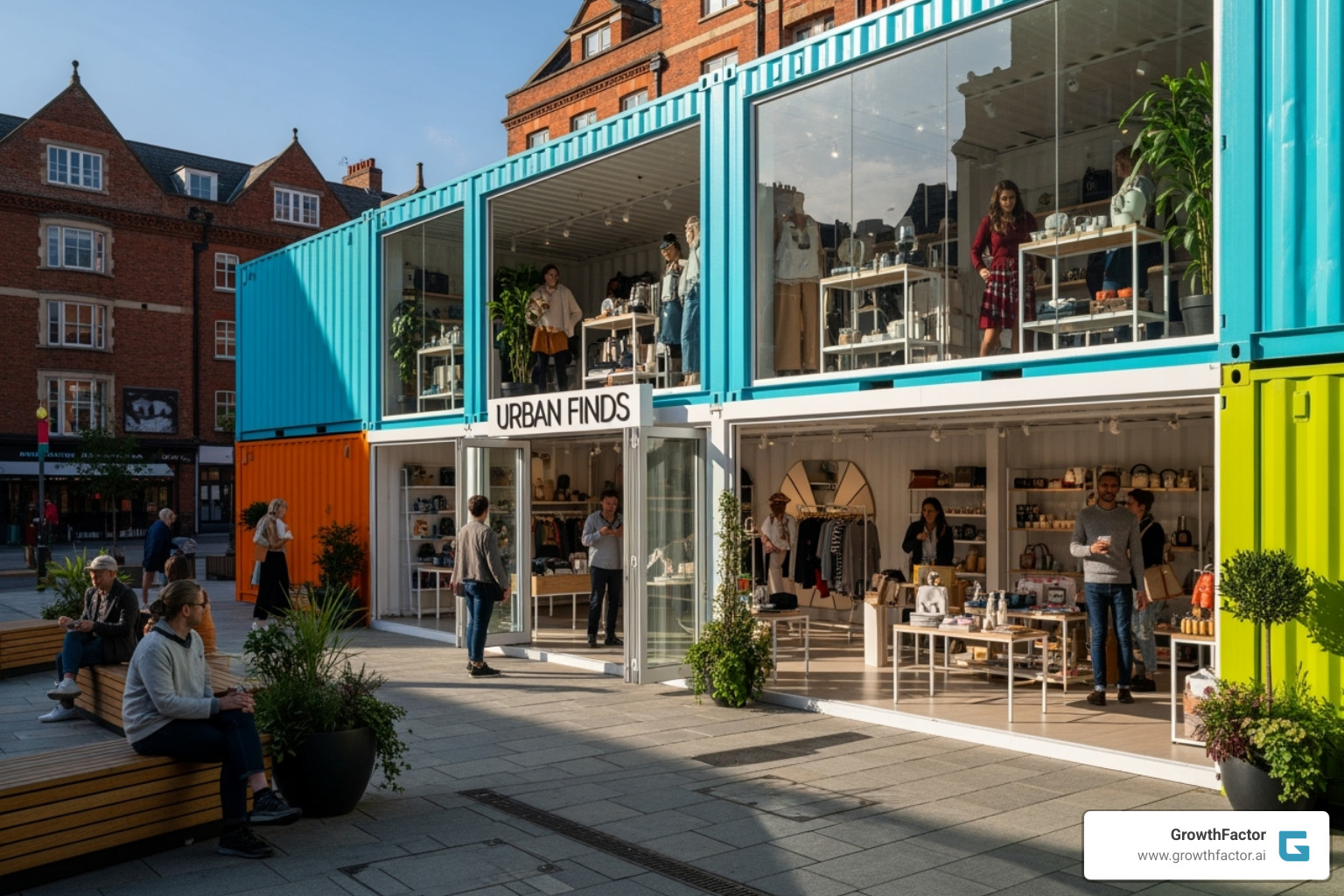
Pop up retail has exploded into a $50 billion industry, reshaping how brands connect with customers. These temporary stores appear for days, weeks, or months before vanishing, creating an excitement and urgency that traditional retail struggles to match. They serve to test markets, launch products, and build brand awareness through unique customer experiences.
This strategy is a win-win-win: brands test new markets with minimal risk, customers enjoy exclusive experiences, and landlords fill vacant spaces. The concept isn't new, tracing back to seasonal markets, but modern pop up retail emerged in the late 1990s. Today, major brands and startups alike use pop-ups to create memorable brand moments.
For retail executives, pop up retail is a powerful tool for validating new locations before committing to long-term leases—a crucial advantage as real estate decisions grow more complex. As the founder of GrowthFactor.ai, I've seen how temporary ventures can become successful permanent stores, serving as a smart testing ground for larger expansion plans.
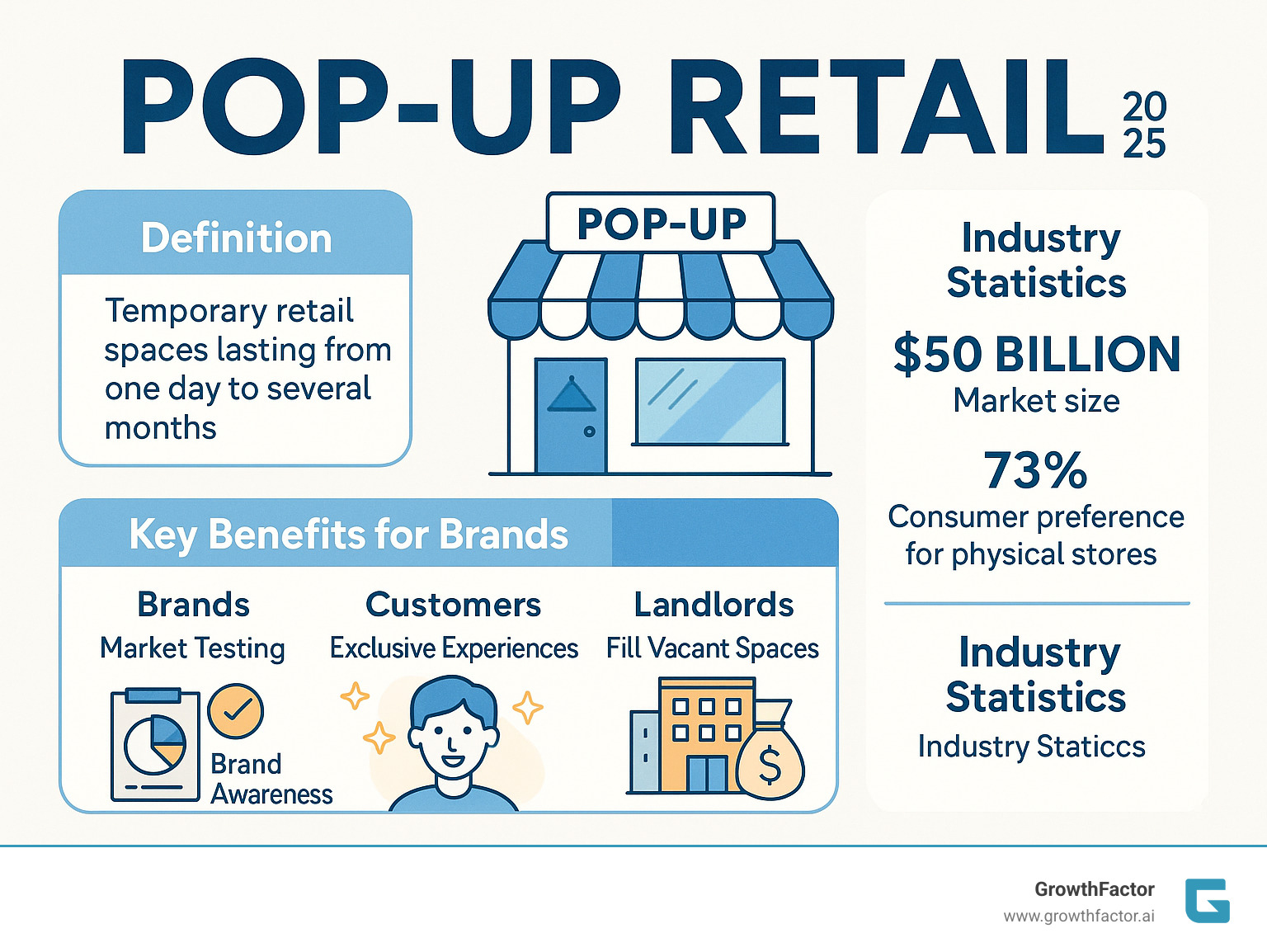
Must-know pop up retail terms:
What is Pop-Up Retail and Why is it Booming?
Pop up retail is a temporary sales space where a brand can create an amazing customer experience for a few weeks, then vanish. These short-term shops are used for more than just sales; they are powerful tools for brand promotion, creating buzz that traditional advertising can't match. They also offer invaluable face-to-face customer engagement, especially for online-first businesses.
Market testing is another huge draw. Instead of committing to a 10-year lease, retailers can test a location for a few months. The American Marketing Association's article, The Magic of Pop-Up Shop Marketing, highlights how these temporary spaces create unique, memorable experiences that drive engagement and sales.
The so-called retail apocalypse of the 2010s created the perfect conditions for pop up retail. As traditional stores closed, landlords were left with vacant spaces and became more flexible with lease terms, moving away from rigid 5-year requirements.
A Brief History of Pop-Up Retail
The concept of temporary retail dates back centuries to European seasonal markets, like the Vienna December market in 1298. Modern pop up retail as we know it began in Los Angeles in the late 1990s, with events like the Ritual Expo in 1997 blending fashion, art, and music.
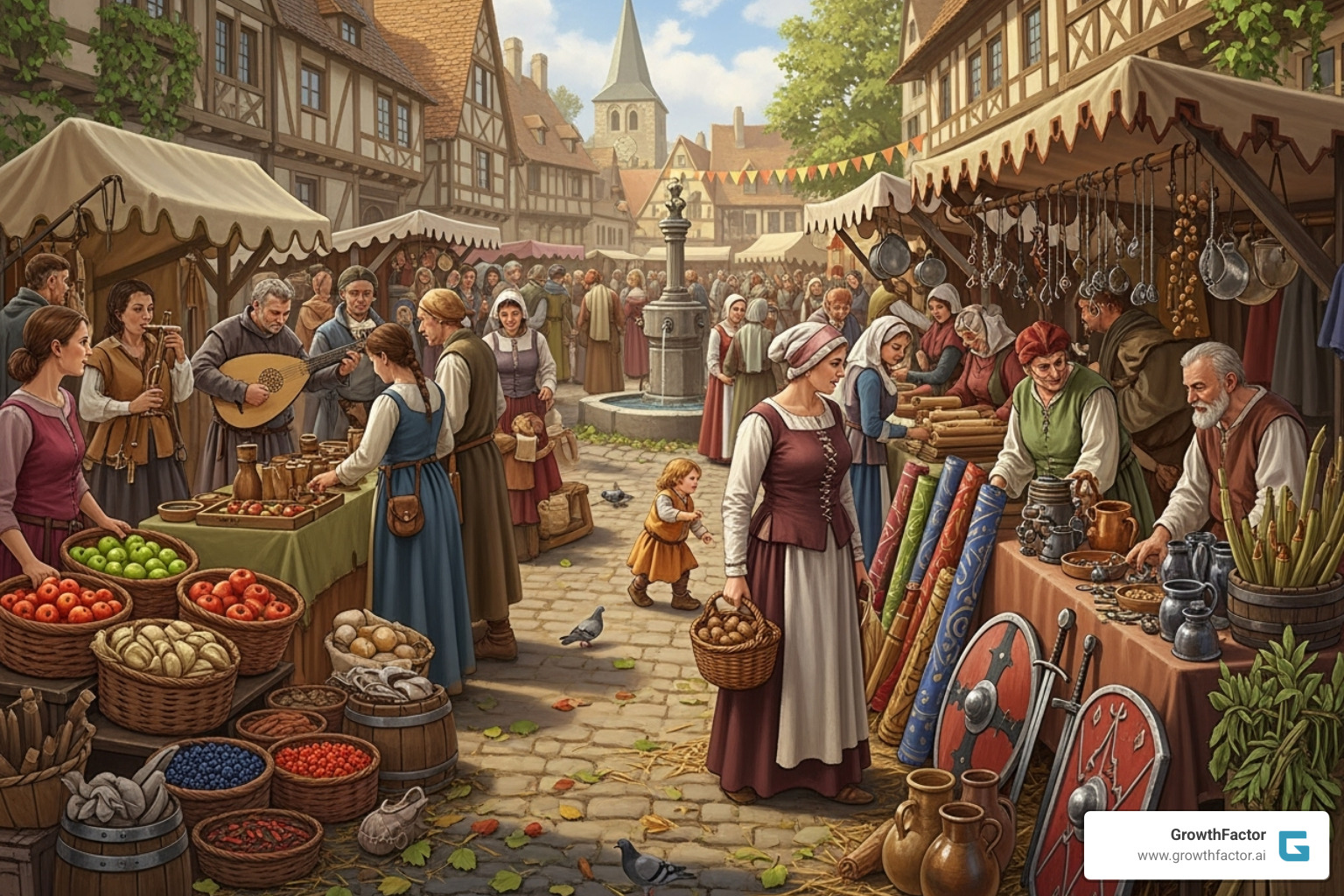
The term was coined in 2004, but major brands were already experimenting. Target famously took over a boat at Chelsea Piers in 2002 for Black Friday. The concept has since evolved, with Samsung's 2013 NYC pop-up becoming a permanent store and Fourth Element opening an underwater shop in 2015, proving the limitless creative potential of pop up retail.
Pop-Up vs. Traditional Retail: Key Differences
The contrast between pop up retail and traditional stores goes beyond lease length, shaping everything from finances to customer relationships.
- Lease & Commitment: Pop-ups operate on short-term leases (days to months) with a lower financial commitment and risk. Traditional retail involves long-term leases (years) with significant upfront investment.
- Flexibility: Pop-ups are highly flexible, allowing brands to experiment with concepts and locations. Traditional stores are fixed, making changes difficult and costly.
- Marketing & Customer Experience: Pop-ups thrive on urgency, exclusivity, and the FOMO factor, creating intense, memorable moments. Traditional retail focuses on building steady, long-term consistency and comfort. This experimental nature makes pop up retail a powerful tool for smart expansion.
The Strategic Advantages of Pop-Up Retail
Pop up retail creates genuine excitement by fostering authentic in-person connections. There's something irreplaceable about experiencing a brand's personality firsthand, which builds loyalty that digital marketing alone can't match. This strategy taps directly into FOMO (Fear of Missing Out), as research shows 60% of sales are driven by FOMO. The temporary nature compels customers to visit sooner rather than later.
This urgency is highly relevant, as an IBM study reveals that 73% of consumers prefer physical stores for purchases. Pop up retail meets this demand without the commitment of a traditional store.
Benefits for Your Business
Pop-ups offer a low-risk way to test ideas and expand. Key benefits include:
- Lower Overhead: Shorter leases, minimal build-outs, and smaller inventory needs reduce financial risk.
- Test New Markets: Instead of guessing, you can try locations like Dallas or Denver with temporary stores. Our AI platform at GrowthFactor makes this even smarter, helping teams evaluate more sites efficiently, aligning with effective Retail Expansion Planning Software strategies.
- Launch New Products: Create buzz and get immediate, honest feedback by launching products in an exclusive pop-up event.
- Clear Inventory: A temporary flash sale feels special, not desperate, protecting your brand image.
- Generate Buzz: Pop-ups are inherently newsworthy, attracting attention from local media and influencers.
- Gather Customer Data: Direct conversations and observations provide insights that online analytics can't.
Benefits for Your Customers
Customers gain unique experiences that go beyond typical shopping. They enjoy:
- Exclusive Experiences: Hands-on workshops, product customization, and themed environments tell a brand's story.
- Sense of Urgency and Findy: The joy of stumbling upon something unexpected and temporary is a powerful draw.
- Access to Online-Only Brands: Pop-ups bridge the gap between digital and physical, allowing customers to touch and trust products before buying.
- Interactive Shopping: Engaging with products in memorable ways encourages sharing and builds connections.
Benefits for Landlords
Property owners find that pop up retail solves several challenges:
- Fill Vacant Spaces: Turn lost revenue into flexible, short-term income streams.
- Attract Long-Term Tenants: A successful pop-up demonstrates a location's viability and foot traffic potential.
- Increase Foot Traffic: Rotating concepts keep properties dynamic and give people new reasons to visit, creating a vibrant retail environment.
Your Blueprint for a Successful Pop-Up Launch
A successful pop up retail experience is like a live performance where every element—planning, execution, and marketing—works together to tell a compelling story. The goal is to create a memorable brand moment that drives sales and customer connections.
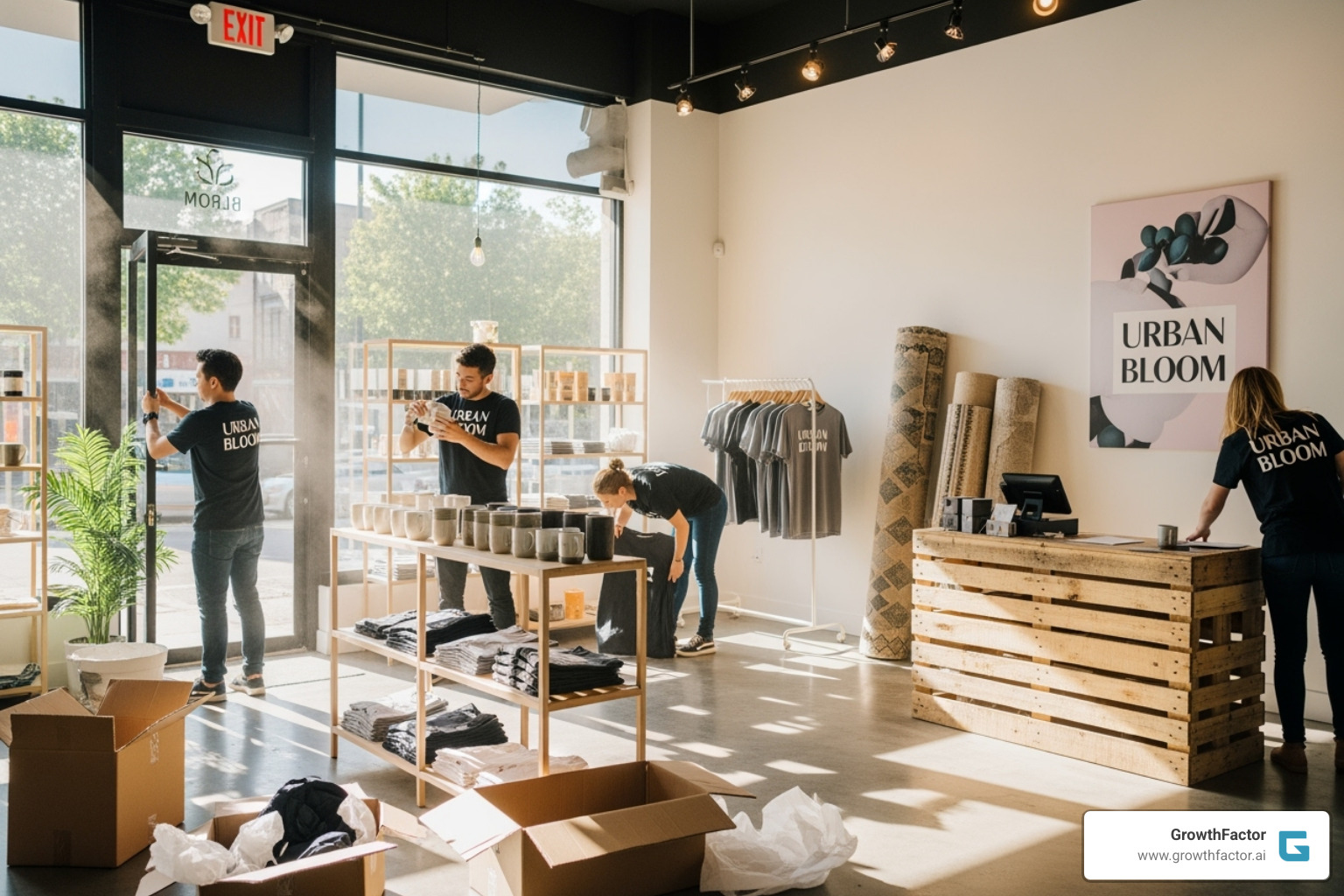
Types of Pop-Up Shops and Creative Concepts
The beauty of pop up retail is its creative freedom. Common formats include:
- Marketing Event Pop-Ups: Focus on brand experience and social media buzz over direct sales.
- Seasonal Shops: Capitalize on holidays or specific times of year, like Halloween or Christmas.
- Experimental Pop-Ups: Serve as real-world labs to test new products or concepts and gather feedback.
- Shop-in-Shops: Leverage existing foot traffic by setting up within an established, non-competing business.
- Mobile Pop-Ups: Use unconventional spaces like shipping containers or buses to travel to different locations and events.For more inspiration, explore these creative pop-up ideas that have captured customer imagination.
Key Considerations for Your Pop-Up Retail Location
Location is critical for a short-term venture. Focus on:
- Foot Traffic & Demographics: Ensure the area is frequented by your target customer.
- Visibility & Accessibility: Choose a location with good sight lines, signage opportunities, and easy access via walking or transport.
- Co-tenancy: Neighboring businesses should be complementary, creating a synergistic environment.
At GrowthFactor, we use Data-Driven Site Selection to make these decisions. Our AI Agent Waldo leverages AI for Retail Site Selection to analyze demographics, foot traffic, and competitive landscapes, including detailed Trade Area analysis.
Legal, Costs, and Logistics
While flexible, pop-ups require careful planning.
- Legal Requirements: Secure necessary permits, which can include a temporary business license, vendor permits, health/fire department clearance, and general liability insurance.
- Cost Planning: Budgets can range from $5,000 to over $25,000. Key expenses include rent, build-out (consider renting fixtures to save money), inventory, staffing, marketing, and a POS system. Forbes research shows 70% of consumers prefer cards.
- Logistics: Plan for inventory transport and storage, staffing for setup and breakdown, and a reliable POS system that tracks sales and inventory.
Marketing Your Pop-Up for Maximum Buzz
Effective marketing is essential to drive foot traffic. The temporary nature creates natural urgency.
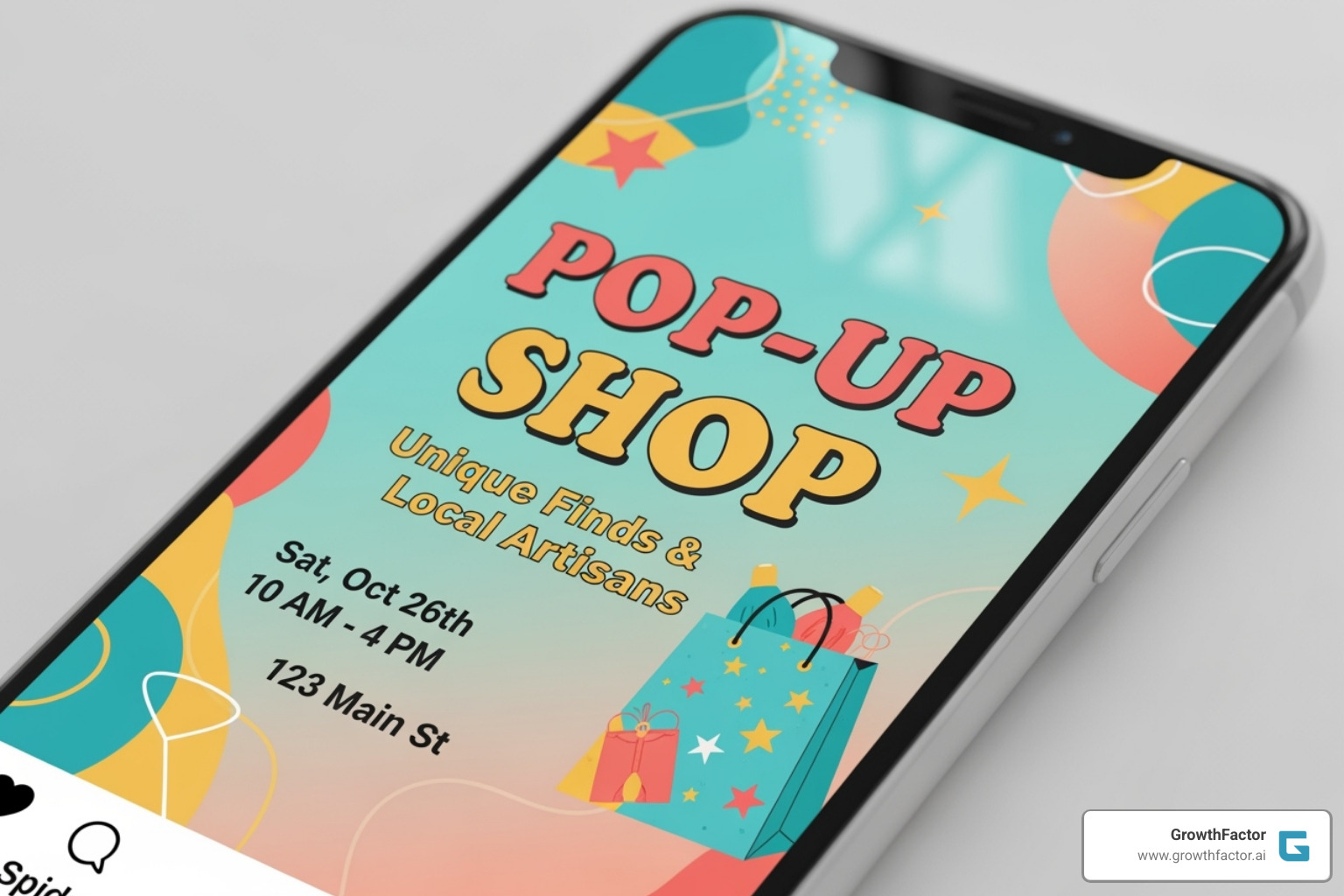
- Digital Marketing: Use social media and email to build anticipation. Create a Facebook event page and partner with local influencers whose audiences align with your brand.
- Partnerships & PR: Cross-promote with non-competing local businesses and reach out to local media with a newsworthy angle.
- In-Store Events: Host workshops, demos, or meet-and-greets to transform your space into a destination. Offer opening-day promotions and create Instagram-worthy photo opportunities to encourage social sharing.
Every marketing message should emphasize the limited-time nature of your pop up retail experience to motivate immediate action.
Measuring Success and The Future of Flash Retailing
The real value of pop up retail is realized after the event, when you analyze the data. Unlike traditional retail, pop-ups provide immediate insights that can shape your entire expansion strategy.
How to Measure Your Pop-Up's ROI
To get a full picture of performance, track multiple indicators:
- Sales Data: Look beyond total revenue to average transaction value and sales conversion rate (sales divided by foot traffic) to understand buyer behavior.
- Foot Traffic: Use counters to identify peak hours and traffic patterns, which helps optimize staffing.
- Social Media Analytics: Measure engagement, reach, and the use of your hashtags to gauge the buzz factor.
- Customer Feedback: Use simple surveys to gather qualitative insights on what drew customers in and what they thought of the experience.
- Lead Generation: Track email sign-ups and social media follows to measure long-term value beyond immediate sales.
- Media Mentions: Note any press or influencer coverage to understand your earned media value.
The Future of Pop-Up Retail
The future of pop up retail is innovative and integrated with technology:
- Virtual & AR Experiences: Immersive virtual pop-ups and in-store augmented reality will blend the physical and digital, creating shareable moments.
- Personalization & Hyper-local Focus: Pop-ups will use data to curate personalized experiences and will integrate more deeply with local communities and causes.
- E-commerce Integration: Seamless connections, like QR codes linking to online product pages and in-store ordering for home delivery, will bridge the online-offline gap.
- Sustainability: Expect a move toward reusable, modular setups that minimize waste.
- AI-Powered Analytics: Tools like our AI Agent Waldo will revolutionize location selection and success measurement. AI-Powered Retail Analytics will transform pop-ups from educated guesses into precise, data-driven strategies, making them an essential tool for validating permanent locations.
Frequently Asked Questions about Pop-Up Retail
Here are answers to the most common questions retail executives ask about pop up retail.
How long should a pop-up shop last?
The ideal duration depends on your goals. A short pop-up (a weekend or a week) creates maximum urgency and buzz. A longer one (one to three months) is better for testing a new market or building deeper customer relationships. If you're seriously considering a permanent store as part of a retail store expansion strategy, a longer duration provides more meaningful data.
What are the biggest challenges when opening a pop-up shop?
The main challenges are unique to the temporary format:
- Finding the Right Location: Prime spots are competitive and must align with your target customer and timeline.
- Securing Permits: Navigating city-specific rules for temporary business licenses, vendor permits, and insurance can be time-consuming.
- Driving Consistent Foot Traffic: It requires ongoing marketing and engaging experiences to maintain momentum beyond opening day.
- Managing Short-Term Operations: Efficiently handling setup, inventory, temporary staff, and breakdown requires careful logistical planning.Tools like our AI Agent Waldo can help overcome the location challenge by evaluating potential sites much faster.
Can an online-only business benefit from a pop-up shop?
Absolutely. It's a brilliant strategy for digital-first businesses. A pop-up provides a crucial physical touchpoint, allowing customers to see and touch products, which builds trust and overcomes online shopping hesitation. It's an opportunity to meet your team, share your brand story, and create a real-world connection. For many online brands, pop up retail is the perfect low-risk way to test the waters for a permanent Retail Store Expansion Strategy and generate significant marketing buzz.
Conclusion: Is a Pop-Up Shop Right for Your Brand?
Pop up retail has evolved from a simple necessity into a sophisticated, $50 billion industry. It offers a unique combination of low risk and high reward, allowing brands to test markets, launch products, and create buzz without the commitment of traditional retail.
For online brands, pop-ups bridge the crucial gap between digital and physical, especially when 73% of consumers still prefer in-store shopping. The format's flexibility allows you to tailor the experience to your specific goals, whether that's testing a retail store expansion strategy or clearing inventory with a flash sale.
Location remains the most critical factor for success. A data-driven approach to site selection is your competitive advantage. Our AI platform, powered by AI Agent Waldo, helps you evaluate potential sites with a precision that manual methods can't match.
The future of pop up retail is bright, with technology like AR and AI making these temporary experiences even more valuable. If you want to test, learn, and grow with less risk, the answer is clear. A pop-up is a chance to inject fresh energy into your brand and make smarter expansion decisions.
Ready to turn temporary into transformative? Find out how our data-driven approach can help you find your next high-growth retail location and make your pop-up a profitable reality.
Citations
The human algorithm
Request a live demo
Schedule meeting
Or submit your information below and we'll be in touch to schedule.


